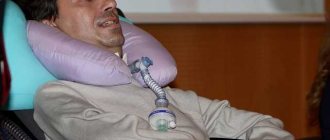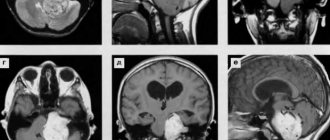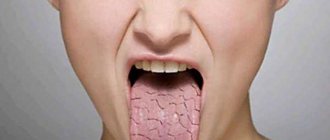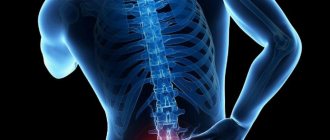Adentia is a dental term used to designate a disease in which the dentition is partially or completely missing teeth, lost due to a variety of reasons. There are complete, partial, secondary, primary, adentia of milk or molar teeth. This article will discuss partial secondary adentia, the causes of its occurrence and methods of elimination.
What is partial edentia
Partial secondary adentia is the absence of one or more teeth in the dentition of the upper or lower jaw. Sometimes primary or congenital adentia occurs; in this case, teeth are absent due to disturbances in the formation of tooth buds during the period of intrauterine development.
But much more often, dentists have to deal with secondary partial adentia - a disease in which a person loses formed teeth during life due to various circumstances.
Even the loss of one tooth in the upper or lower dentition is considered edentulism, the treatment of which is not recommended to be delayed for long. If more than three teeth are lost, especially consecutive ones, numerous and very serious complications can develop, so treatment is simply necessary and it is better to carry it out immediately after tooth loss.
Symptoms in the primary form
Adentia in children can be detected during the formation of a primary dentition or already with a permanent one. The specialist even notices the symptoms visually: in the absence of teeth and their rudiments, in most cases the structure of the facial skeleton is disrupted. The lower third of the face is unusually smaller in size, the palate is flat, the jaws are poorly developed, and the supramental fold is clearly defined. Developmental disorders can also be observed on the skull: for example, the bones of the maxillofacial apparatus are not fused, the fontanelle and the bones of the skull do not heal as expected. If the cause of the disease is anhydrotic ectodermal dysplasia, in parallel one can observe the absence of eyelashes and eyebrows, early aged skin, and damage to the mucous membranes.
Complete edentulism of the jaw of the primary form is characterized by the fact that the patient cannot eat normally: he is unable to bite and chew food, it is possible to eat only liquid or puree foods. Due to a violation of the structure of the skull, including underdevelopment of the nasal passages, the patient has mixed breathing, breathing simultaneously through the nose and mouth. The person also experiences difficulties in the functioning of the speech apparatus; he is unable to pronounce sounds that involve the teeth and tongue.
Primary partial adentia is characterized by the absence of a normal number of units in the dentition. Neighboring teeth shift into the area of the formed voids, the jaws are not always developed. The location does not matter: they can be outside the dentition, or creep on top of each other. Pronunciation is impaired (with frontal defects), and gingivitis may develop.
Why is secondary adentia dangerous?
If a person has lost his front teeth, then usually he does not delay their restoration - after all, the absence of a front tooth is noticeable to others, looks very unaesthetic and often causes problems with diction and whistling when speaking.
If, due to caries or other circumstances, the lateral teeth are lost, which is not so noticeable from the outside, the patient often does not attach any importance to this and does not at all consider that he has a serious disease that requires immediate treatment. While changes are already taking place in the body, it will be more and more difficult to correct over time.
This careless attitude towards one’s own health is explained by numerous factors:
- lack of time for dental restoration and treatment;
- lack of financial resources;
- some diseases that may be a contraindication to implantation;
- lack of opportunity to restore teeth if a person lives in unsatisfactory social conditions that do not provide dental care.
Important: More than 75% of the world's population is faced with the problem of secondary partial adentia. The most common cause of the disease is tooth loss due to advanced caries or pulpitis.
Meanwhile, problems with biting and chewing food are not the only complications that can result from the phenomenon of partial adentia. What happens in this case in the human body?
- The dentition becomes narrower or shorter.
- The remaining teeth in the dentition begin to shift, as the body tries to fill the gaps that have formed and “stretch” the teeth. As a result, gaps appear between the teeth, their positions are disturbed, and rotations and curvatures are possible.
- The secretory function of the salivary glands decreases, which affects the functioning of the stomach.
- The quality of chewing food deteriorates, its movement from the oral cavity to the esophagus and stomach slows down.
- Intestinal motility decreases.
- Metabolic processes in the body are disrupted, primarily protein processes.
- Mineralization of dental tissues also worsens.
- The bone tissue of those parts of the jaw where teeth are missing becomes thinner.
- In young children, with edentulous primary teeth, the dentition is significantly shortened, so later, when the permanent teeth erupt, there is not enough space, they grow crowded, creeping one on top of the other. And this is fraught with the formation of an incorrect bite
Loss of teeth, especially global, affects the condition of the temporomandibular joint. Ligaments and muscles are greatly weakened, which can lead to dislocation or subluxation of the lower jaw. The contour of a person’s face visually changes, there is a sinking of the cheeks and lips, previously sagging skin and the formation of wrinkles that are not associated with age-related changes.
We must not forget about the psychological factor: in the absence of teeth, a person begins to develop complexes, he experiences difficulties communicating with other people, becomes irritable, withdrawn, aggressive or depressed, and often suffers from depression and self-doubt.
Adentia - symptoms and treatment
The treatment tactics are chosen by the dentist based on a thorough examination.
For partial edentia, traditional bridge, clasp, plastic and nylon plate prostheses are used.
The most reliable, aesthetic and promising treatment method is implant prosthetics. One of the latest developments in this area is physiological dental implants printed on a 3D printer. Thus, at the International Dental Exhibition in 2017, they demonstrated a model of a dental implant printed on a 3D printer, which completely replicated the natural shape of the tooth.
Experience with traditional dental implants over the years has proven their longevity. An undoubted advantage is that there is no need to remove healthy tissue from adjacent teeth (unlike traditional bridge prosthetics).
In case of complete absence of teeth, preference is given to removable and fixed prosthetics supported by implants. Progressive atrophy of the alveolar ridges of the jaws, associated with the lack of adequate chewing load, complicates the use of removable plate dentures, especially in the lower jaw.
The greatest difficulty in treatment is in cases of childhood edentia : the growth and development of the dental system, which continues after the birth of the child, limits the use of implants.
The main issues that arise when using dental implants in children and adolescents are:
- the effect of implants on the growth and development of individual parts of the jaws, the jaw as a whole and the dental system;
- the influence of growth on the position of implants and changes associated with this.
After the eruption of permanent teeth, the jaw bones stop growing, so the use of dental implants is possible in children with all erupted permanent teeth (except for the third molars - wisdom teeth).
Thus, in 1989, the DGZMK organization came to the conclusion that the use of dental implants in children under 15 years of age may pose a danger to the normal development of the jaws. However, in some situations, the use of dental implantation is the only possible method of treating adentia (for example, with a pathology such as ectodermal dysplasia). Therefore, in order to competently assist such young patients, the doctor needs to know the principles of growth and development of the jaws and understand the dynamics of the relationship between the implant and the developing jaws.
Causes of secondary adentia
As was said, adentia can be congenital or acquired. Congenital adentia is usually diagnosed in childhood; in order to make an accurate diagnosis, the doctor uses methods such as palpating the gums and soft tissues of the oral cavity, and panoramic X-ray.
The causes of congenital adentia have not been precisely established. Presumably, a hereditary factor plays a major role. In this case, underdevelopment of tooth germs is noted. It is also important how the pregnancy proceeded. Often it is pathologies during pregnancy, malnutrition, metabolic disorders or trauma that cause the child to lack tooth buds.
Important information: it has been established that inflammatory processes in the body can cause adentia. When inflamed, the follicles that serve as the germ of teeth begin to dissolve, resulting in partial adentia.
Secondary partial or acquired adentia develops for the following reasons:
- caries or pulpitis, as a result of which dental tissues are destroyed and teeth have to be removed;
- periodontal disease and periodontitis, when teeth fall out due to defects in the soft tissues of the oral cavity;
- injuries occurring under various circumstances.
Edentia can occur in both adults and children; teeth are often lost in accidents, sports, or careless games.
If with congenital adentia there is a disturbance in the development or complete absence of alveolar processes, then with secondary adentia the alveolar processes form and develop normally. Roots in congenital adentia are often absent, but in secondary ones they can remain, especially if the cause of tooth loss was mechanical damage.
Symptoms of edentia
The main symptom of edentulism is the patient’s lack of teeth. The clinical picture of the disease can be supplemented by:
- pronounced reduction of both jaws;
- retraction of soft tissues in the oral area;
- the appearance of blunt exostoses or painful sharp bone protrusions on the jaws;
- formation of wrinkles in the perioral area;
- atrophy and laxity of the muscles of the lower lobe of the face;
- serious disorders of speech functions (the patient loses the ability to clearly and clearly pronounce dental-linguistic sounds - “ch”, “n”, “z”, “l”, “t”, “d”);
- lack of function to bite off and fully chew food;
- disturbances in the functioning of the TMJ (temporomandibular joint);
- disruptions in the gastrointestinal tract.
The development of adentia is one of the factors that significantly reduces the patient’s self-esteem, causing him to experience constant psychological and physical discomfort.
Prevention of edentia
As for the congenital form of the disease, preventive measures to ensure that the child is born with normally formed tooth buds should be taken by his mother during pregnancy.
- Ensuring a favorable course of pregnancy.
- Creating conditions for intrauterine development.
- Elimination of all, even potential risks.
If a newborn child experiences a long delay, which is six months or more longer than the required time for teething, you should contact a pediatric dentist.
It is important to show the child to doctors on time
Partial acquired adentia can be prevented by timely contacting a dentist and eliminating any dental problems that have arisen. It is also necessary to observe hygienic measures for caring for the oral cavity.
Dental care rules
In case of tooth loss or extraction, it is necessary to carry out prosthetics as soon as possible to restore the dentition and to avoid the development of adentia. The root of the tooth hurts, study the link.
Main types of pathology
The generally accepted classification includes the following forms of edentulism:
- Primary or congenital.
- complete - a rare diagnosis in which from birth the child has no complete dentition on the lower and upper jaws. The x-ray shows that the rudiments of the molars are also missing. Due to pathology, facial deformation is observed. There is no speech. Usually this diagnosis is a symptom of other congenital disorders.
- partial – the main symptom is a lack of teeth by a certain age according to medical standards. It is also typical that there is a large distance between existing rare teeth. In this case, underdevelopment of the jaw and facial asymmetry may occur.
- Secondary or acquired.
- complete - the main difference from congenital is that initially the person had correctly formed healthy teeth. But due to various reasons they were lost. Basically, this is the need for surgical removal due to disease or destruction. With the total absence of teeth, the lower jaw rises towards the nose, and the appearance of an senile face appears. In this case, a person cannot bite off and chew food. Only liquid food can be taken. Diction is getting worse.
- partial – characterized by partial loss of teeth in adulthood. The gap between the remaining teeth increases, which leads to a lisp and inflammatory processes in the oral cavity.
Partial acquired adentia is the most common form in dental practice.
Diagnosis of edentia
At any age, but especially in children, before prosthetics for edentia, the following is carried out:
- determination of chewing efficiency using special formulas;
- X-ray examination to study the condition of the roots of supporting teeth for future dentures and the structure of bone tissue;
- study of bite on plaster models of jaws.
In children, if an abnormality of the dentofacial system is detected, additional measurements of the facial bones are taken for corrective treatment.












